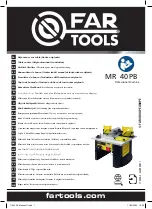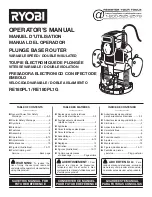
INS_CWGE24MS2_REV–
10/05/16 PAGE 56
INSTALLATION AND OPERATION MANUAL
CWGE24MS2
TECH SUPPORT: 1.888.678.9427
DiffServ (DSCP)
Differentiated Services or DiffServ is a computer networking architecture that specifies a simple,
scalable and coarse-grained mechanism for classifying, managing network traffic and providing
Quality of Service (QoS) guarantees on modern IP networks. DiffServ can, for example, be used to
provide low-latency, guaranteed service (GS) to critical network traffic such as voice or video while
providing simple best-effort traffic guarantees to non-critical services such as web traffic or file
transfers.
Differentiated Services Code Point (DSCP) is a 6-bit field in the header of IP packets for packet
classification purposes. DSCP replaces the outdated IP precedence, a 3-bit field in the Type of
Service byte of the IP header originally used to classify and prioritize types of traffic.
When using the DiffServ priority mechanism, the packet is classified based on the DSCP field in
the IP header. If the tag is present, the packet is assigned to a programmable egress queue based
on the value of the tagged priority. The tagged priority can be designated to any of the available
queues.
Version
IHL
Type of Service
Total Length
Identification
Flags
Fragment Offset
Time to Live
Protocol
Header Checksum
Source Address
Destination Address
Options
Padding
Example Internet Datagram Header
IP Header Type of Service: 8 bits
The Type of Service provides an indication of the abstract parameters of the quality of service
desired. These parameters are to be used to guide the selection of the actual service parameters
when transmitting a datagram through a particular network. Several networks offer service
precedence, which somehow treats high precedence traffic as more important than other traffic
(generally by accepting only traffic above certain precedence at time of high load). The major
choice is a three way tradeoff between low-delay, high-reliability, and high-throughput.
Bits 0-2: Precedence.
Bit 3: 0 = Normal Delay,
1 = Low Delay.
Bits 4: 0 = Normal Throughput, 1 = High Throughput.
Bits 5: 0 = Normal Reliability,
1 = High Reliability.
Bit 6-7: Reserved for Future Use.
















































